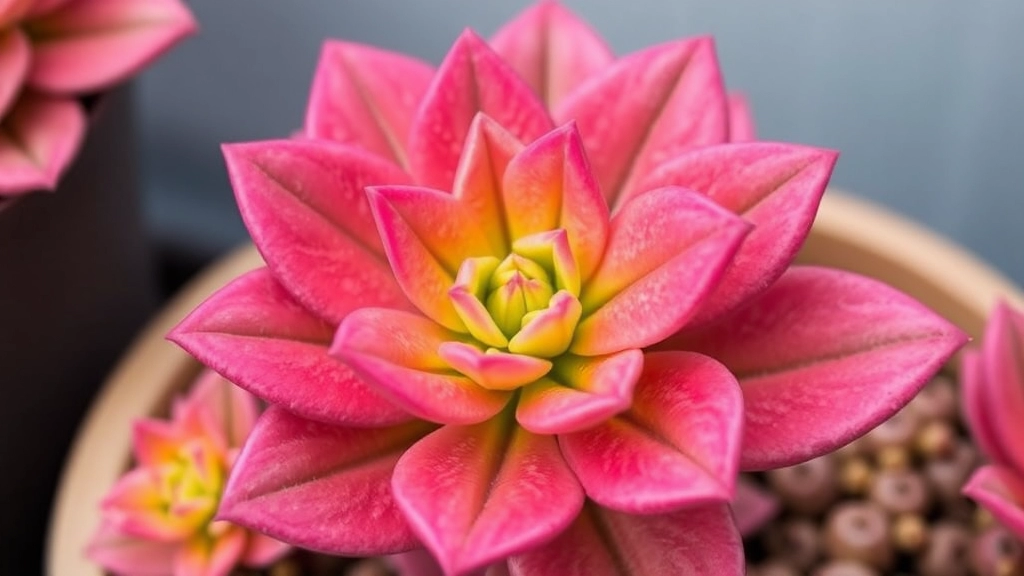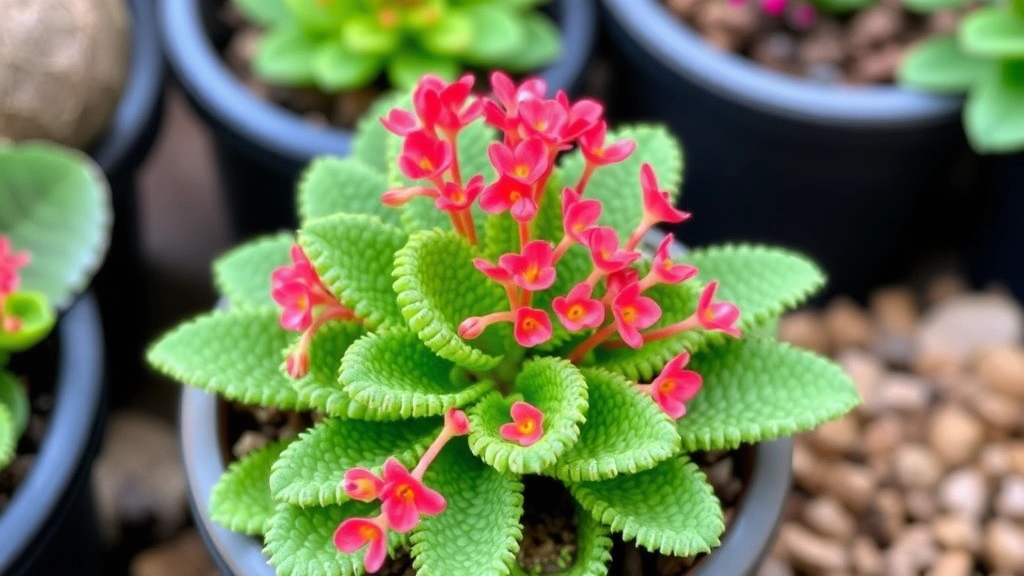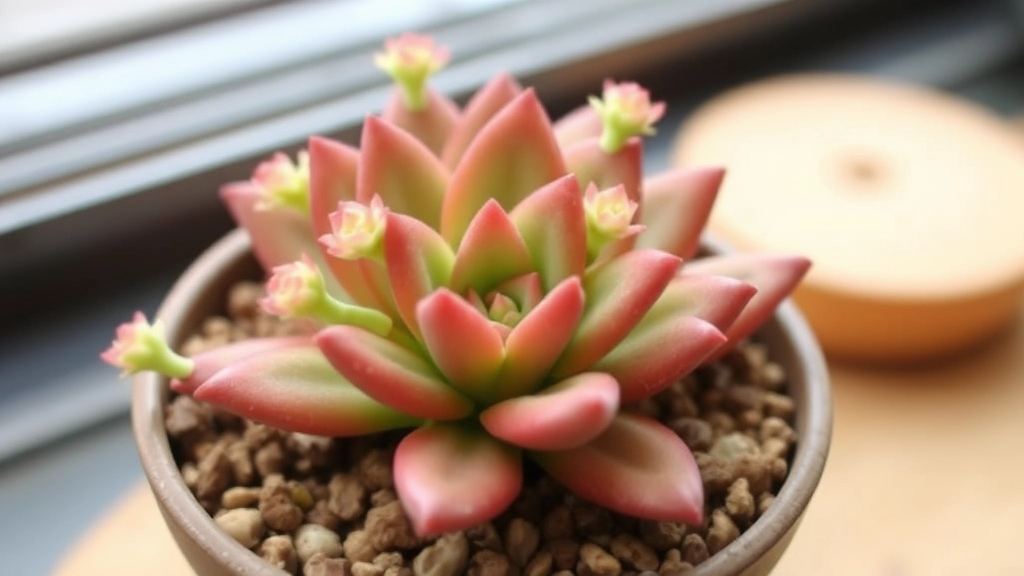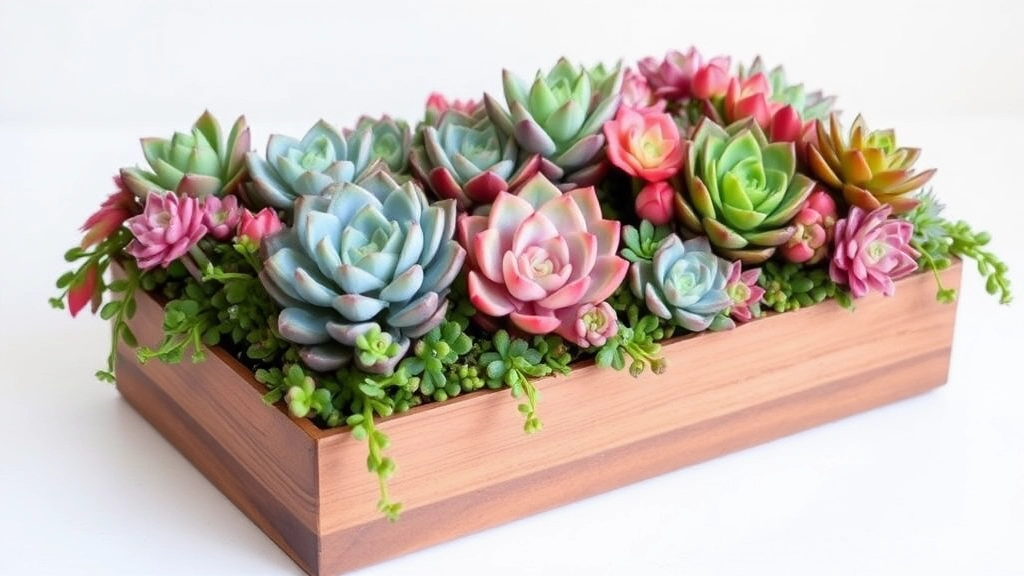Mother Of Thousands Kalanchoe Guide
If you’re looking to add a unique and easy-to-care-for plant to your collection, the Succulents Box Mother Of Thousands Kalanchoe 2 Inch is a fantastic choice. This fascinating succulent not only adds a touch of greenery to your space but also requires minimal maintenance, making it perfect for both novice and experienced plant enthusiasts.
Nurturing Your Mother of Thousands Kalanchoe
In this guide, I’ll share some essential tips for nurturing your Mother of Thousands Kalanchoe. From light and water requirements to repotting and propagation, you’ll find everything you need to keep your succulent thriving. Let’s dive in and make your plant journey a success!
Overview of Mother of Thousands (Kalanchoe)
Are you curious about the intriguing Mother of Thousands, also known as Kalanchoe?
This unique succulent is famous for its remarkable ability to produce numerous offspring, making it a popular choice for both novice and seasoned plant enthusiasts.
Kalanchoe is not just an ordinary houseplant; it’s a resilient and visually striking addition to any collection.
With its fleshy leaves and vibrant flowers, it offers both aesthetic appeal and ease of care.
Key Characteristics of Kalanchoe
- Propagation: Known for its ability to produce plantlets along the edges of its leaves, Kalanchoe can quickly fill your space with greenery. Learn more about how to propagate Kalanchoe Mother of Thousands easily.
- Varieties: There are several varieties of Kalanchoe, each boasting unique leaf shapes and colours. Discover the different types of Kalanchoe Tomentosa and their care tips.
- Growth Habit: Typically, Kalanchoe grows upright, reaching heights of up to 2 feet when mature.
Whether you’re looking to brighten up your home or start a new gardening project, Kalanchoe is a fantastic choice.
Unique Features of Kalanchoe

So, you’re curious about what makes Kalanchoe, or the Mother of Thousands, stand out?
Let’s dive into its unique features that make this succulent a favourite among plant lovers.
Eye-Catching Appearance
Kalanchoe boasts thick, fleshy leaves that are often a vibrant green, sometimes tinged with a hint of red.
- Leaf Shape: The leaves are typically oval or lance-shaped, giving them a distinctive look.
- Offsets: One of its coolest features? It produces tiny plantlets along the edges of its leaves, which is how it gets the nickname “Mother of Thousands.” Imagine a plant that literally grows little versions of itself!
Easy to Care For
If you’re someone who worries about plant care, Kalanchoe is a dream.
- Low Maintenance: It thrives on neglect, making it perfect for busy folks or beginners.
- Drought Tolerance: This succulent stores water in its leaves, so you don’t have to water it too often.
Versatile Varieties
Kalanchoe isn’t just one plant; it’s a whole family of them!
- Flowering Varieties: Some species produce stunning flowers in vibrant colours, adding a splash of joy to your space.
- Leaf Varieties: Others boast intricate leaf patterns and textures that can brighten up any corner.
Resilience
This plant is tough!
- Adaptability: It can handle a range of conditions, from low light to bright sunlight, making it a versatile choice for any home.
- Pest Resistance: Kalanchoe is relatively pest-resistant, so you won’t have to worry too much about infestations.
Caring for Your 2-Inch Succulent
Caring for your Mother of Thousands (Kalanchoe) is essential to ensure its vibrant growth and health. Many succulent enthusiasts often worry about how to keep their plants thriving, especially when they are just starting out.
Here are some straightforward tips to help you nurture your 2-inch succulent:
- Watering:
- Allow the soil to dry out completely between waterings.
- Water sparingly, typically every 2-3 weeks, depending on humidity levels.
- Light Requirements:
- Position your Kalanchoe in bright, indirect sunlight.
- A south-facing window is ideal, but avoid direct harsh sunlight to prevent leaf scorch.
- Soil:
- Use a well-draining cactus or succulent mix.
- Ensure the pot has drainage holes to prevent waterlogging.
- Temperature and Humidity:
- Kalanchoe thrives in temperatures between 15°C to 25°C.
- Keep it away from cold drafts and extreme heat.
- Fertilizing:
- Feed your succulent with a diluted liquid fertilizer during the growing season (spring and summer).
- Avoid fertilising in the fall and winter months.
- Pest Management:
- Regularly check for pests like mealybugs and aphids.
- Use a gentle insecticidal soap if infestations occur.
By following these care guidelines, your Mother of Thousands will not only survive but flourish. For more detailed information, you can refer to the comprehensive Mother of Thousands care guide or explore the Kalanchoe propagation guide.
IV. Ideal Growing Conditions for Mother of Thousands (Kalanchoe)

Are you wondering how to provide the best environment for your Mother of Thousands?
Creating the right growing conditions is crucial for the health and vibrancy of your Kalanchoe.
Light Requirements:
- Bright, Indirect Sunlight: Kalanchoe thrives in bright, indirect light. Direct sunlight can scorch its leaves.
- East or West Facing Windows: Positioning your plant near these windows is ideal for optimal growth.
Temperature:
- Warm Temperatures: Kalanchoe prefers temperatures between 20°C to 25°C (68°F to 77°F).
- Avoid Frost: This succulent is not frost-tolerant, so keep it indoors during colder months.
Soil:
- Well-Draining Soil: Use a cactus or succulent mix to prevent root rot.
- pH Level: A slightly acidic to neutral pH (6.0 to 7.0) is best.
Watering:
- Infrequent Watering: Allow the top inch of soil to dry out before watering again.
- Drainage is Key: Ensure your pot has drainage holes to avoid water accumulation.
Humidity:
- Low Humidity: Kalanchoe thrives in low humidity environments, making it perfect for most indoor settings.
Common Issues and Solutions
When caring for your Mother of Thousands (Kalanchoe), you may encounter a few common issues that can affect its health and appearance. Understanding these challenges and their solutions can help you maintain a thriving succulent.
1. Overwatering
Problem: One of the most frequent issues with Kalanchoe is overwatering. This can lead to root rot, which is detrimental to your plant.
Solution:
- Ensure the pot has drainage holes.
- Water only when the top inch of soil is dry.
- Use well-draining soil to promote airflow.
2. Underwatering
Problem: Conversely, underwatering can cause your Kalanchoe to wilt and lose its vibrant colour.
Solution:
- Water deeply, allowing excess to drain out.
- Monitor soil moisture frequently, especially in hotter months.
- Adjust your watering schedule based on environmental conditions.
3. Pests
Problem: Pests such as mealybugs and aphids can invade your succulent, leading to stress and damage.
Solution:
- Inspect your plant regularly for signs of pests.
- Use insecticidal soap or neem oil to eliminate infestations.
- Keep your plant in a well-ventilated area to discourage pests.
4. Leaf Drop
Problem: If your Kalanchoe’s leaves are dropping, it may be a sign of stress due to environmental changes.
Solution:
- Avoid sudden temperature changes.
- Ensure your plant isn’t exposed to drafts.
- Check for signs of over or underwatering.
5. Fading Colour
Problem: A Kalanchoe that loses its vibrant colour may not be receiving enough light.
Solution:
Propagation Techniques for Mother of Thousands (Kalanchoe)

So, you’ve got your Mother of Thousands, and you’re probably wondering how to multiply its beauty.
Propagation is one of the most rewarding aspects of caring for Kalanchoe.
Let’s dive into some straightforward techniques that’ll have you sharing your plant love in no time.
Leaf Cuttings
- Select Healthy Leaves: Choose plump, healthy leaves from your Kalanchoe.
- Cut Carefully: Use a clean, sharp knife or scissors to snip the leaves from the stem.
- Drying Time: Let the cuttings dry for a day or two to form a callus. This helps prevent rot.
- Planting: Place the dried leaves on top of well-draining soil. You can gently press them down if you like.
- Water Sparingly: Mist the soil lightly to keep it moist but not soggy.
Offsets
- Identify Offsets: Look for tiny plantlets (or offsets) growing around the base of your Kalanchoe.
- Remove Gently: Carefully separate these offsets from the main plant using your fingers or a small tool.
- Planting: Place them in their own pots with cactus soil.
- Watering: Give them a light watering, then let the soil dry out before watering again.
Seed Propagation
- Collect Seeds: If your plant flowers, you can collect seeds from the flower heads.
- Sow Seeds: Sprinkle them on the surface of a well-draining potting mix.
- Light Coverage: Lightly cover the seeds with a thin layer of soil.
- Keep Moist: Mist the soil regularly to keep it moist until the seeds germinate.
Tips for Success
- Patience is Key: Not all methods will yield immediate results, so don’t rush the process.
- Keep an Eye on Humidity: Higher humidity can help your cuttings root faster.
- Be Mindful of Light: Ensure your new plants get indirect sunlight to prevent scorching.
Finding quality succulents, particularly the Mother of Thousands (Kalanchoe), can be a daunting task.
You might wonder:
– Where can I find healthy plants?
– How do I ensure I’m getting a good deal?
– Are there reputable online stores?
Fortunately, there are several reliable sources where you can purchase Kalanchoe and other succulents. Here’s a breakdown to help you make informed choices:
### Local Nurseries and Garden Centres
– **Benefits**: You can inspect the plants in person, ensuring they are healthy and free from pests.
– **Tip**: Ask staff for advice on care and maintenance; they often have valuable insights.
### Online Retailers
– **Examples**: Websites like Etsy, Amazon, and dedicated succulent shops offer a wide variety.
– **Benefits**: Convenience of shopping from home and often a broader selection.
– **Tip**: Check customer reviews for quality assurance.
### Specialty Succulent Stores
– **Benefits**: These shops focus exclusively on succulents, providing expert knowledge and high-quality plants.
– **Tip**: Look for stores with a good return policy in case the plant arrives damaged.
### Plant Swaps and Local Markets
– **Benefits**: You can find unique varieties and support local growers.
– **Tip**: Bring along a friend to help you choose the best specimens.
When purchasing succulents, always prioritise quality over price. A healthy plant will thrive and save you time and effort in the long run. For more detailed care tips, check out our [Mother of Thousands Kalanchoe Care Tips and Growing Guide](https://planthq.org/mother-of-thousands-kalanchoe-care-tips-and-growing-guide/) and learn how to [Propagate Kalanchoe from Leaves Successfully](https://planthq.org/how-to-propagate-kalanchoe-from-leaves-successfully-2/).
Customer Reviews and Testimonials
So, you’re thinking about adding a Mother of Thousands (Kalanchoe) to your collection, right?
You’re not alone!
Many plant lovers rave about this unique succulent, and their experiences can help guide your decision.
What People Are Saying
- Easy to Care For: A lot of folks mention how low-maintenance Kalanchoe is. Perfect for busy lives!
- Stunning Appearance: Customers love the way these plants look. Their cascading leaves create a beautiful display that can brighten any space.
- Propagation Success: Many have shared stories of successfully propagating their Kalanchoe, which is super rewarding. Who wouldn’t want more plants without spending a dime?
- Air Purifying: Some users have noted that they feel their air quality improves with these plants around. A nice bonus, right?
Real-Life Experiences
One customer shared how their Kalanchoe thrived on their windowsill, soaking up the sun and producing offsets like a champ.
Another mentioned how they gifted a small one to a friend, who was over the moon about it!
These little stories show just how much joy Kalanchoe can bring into your life.
Final Thoughts
Overall, the feedback is overwhelmingly positive.
People love the aesthetics, ease of care, and the joy of propagation. For those interested in learning more about the different varieties, the Mother of Thousands varieties care guide is a great resource. Additionally, if you’re curious about the propagation process, check out the step-by-step propagation guide.
FAQs About Kalanchoe (Mother of Thousands)
What makes Kalanchoe, or the Mother of Thousands, unique?
Kalanchoe is known for its thick, fleshy leaves that are often vibrant green and sometimes tinged with red. One of its most fascinating features is the production of tiny plantlets along the edges of its leaves, earning it the nickname “Mother of Thousands.”
Is Kalanchoe easy to care for?
Yes, Kalanchoe is very low maintenance. It thrives on neglect, making it an excellent choice for busy individuals or beginners. Its drought tolerance means you don’t have to water it frequently.
What are the ideal growing conditions for Kalanchoe?
Kalanchoe thrives in bright, indirect sunlight and prefers warm temperatures between 20°C to 25°C (68°F to 77°F). It requires well-draining soil and infrequent watering, allowing the top inch of soil to dry out before watering again.
Can Kalanchoe handle different light conditions?
Yes, Kalanchoe is adaptable and can handle a range of light conditions, from low light to bright sunlight. However, it thrives best in bright, indirect light.
How do I propagate Kalanchoe?
You can propagate Kalanchoe through leaf cuttings, offsets, or seeds. Each method involves specific steps, such as selecting healthy leaves, allowing cuttings to dry, and planting in well-draining soil.
What type of soil is best for Kalanchoe?
Kalanchoe prefers well-draining soil, ideally a cactus or succulent mix. The pH level should be slightly acidic to neutral, ranging from 6.0 to 7.0.
Is Kalanchoe pest-resistant?
Yes, Kalanchoe is relatively pest-resistant, making it a low-maintenance choice for indoor gardening.
What are some tips for successful propagation?
Patience is key, and not all methods will yield immediate results. Keep an eye on humidity, as higher humidity can help cuttings root faster. Ensure your new plants get indirect sunlight to prevent scorching.
Can Kalanchoe tolerate frost?
No, Kalanchoe is not frost-tolerant. It should be kept indoors during colder months to avoid frost damage.
What are some versatile varieties of Kalanchoe?
Kalanchoe includes both flowering varieties, which produce stunning flowers in vibrant colors, and leaf varieties, which have intricate patterns and textures.
References
-
Growing Kalanchoe Succulents
-
Kalanchoe Plant Care: Tips For Growing Kalanchoe Plants
-
Kalanchoe – House Plants Expert
